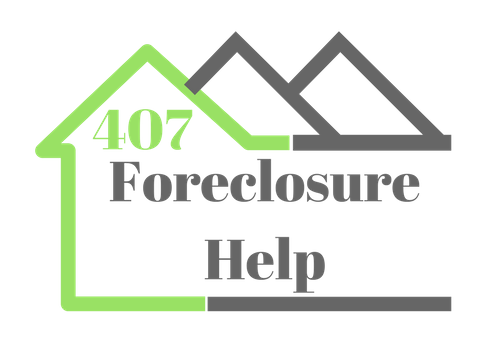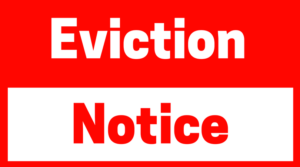What IS Foreclosure?
Foreclosure first and foremost is not a state of being but rather a process against the property. Every year hundreds of homes face foreclosure. It can affect you, a friend or even a loved one. The best way to protect yourself is to be informed of how foreclosure works and what you can do to stop or avoid it.
What causes foreclosure?
Homeowners stop making payments for numerous reasons but mainly due to hardship. Sometimes they must and other times they go into foreclosure voluntarily. Many times, it is unpredictable and can be for any of these reasons:
- Fired, quit or laid-off job
- Medical reasons cause them to be unable to work
- A large amount of debt and growing bill amounts
- Fights with co-owner of home, and or divorce
- Having to relocate
- Repairs and maintenance, they can no longer afford
An extreme example of an unpredictable event causing foreclosure is during the market crash from 2005-2011. In 2013 Florida was the nation’s leader in foreclosure in the United States. Many homeowners walked away from their homes simply because it was worth far less then what they owed.
While not the best option, it did provide immediate relief to those homeowners. If you are facing one of these situations read below to learn more about the 6 parts involved in foreclosure and what you can do.
Process of foreclosure
Part 1- Payment Default
When a borrower misses at least one mortgage payment, a payment default has occurred. The lender is then able to send a missed payment notice indicating they have not received the missed months mortgage. Most lenders tend to usually offer a grace period of 15 days before sending out the missed payment notice. They can also charge a late fee for the missed payment if desired.
After two payments are missed though, the lender can send a Demand Letter. While this is more serious then a missed payment notice, most lenders will generally still try to work with the borrower to make the payments. The borrower would typically have to remit payment within 30 days of the notice.
Part 2 – Beginning the Foreclosure Trial
After attempts to reach and notify you the lender now can take the trial to the court. In Florida most mortgages are judicial. That means the lender (plaintiff) must file a lawsuit in state court.
Under new rules that went into effect January 10, 2014, by the federal Consumer Financial Protection Bureau the mortgage servicer must wait 120 days of delinquency before filing in state court. You have until this time before the foreclosure process starts. The servicer can still send you letters informing you of your late payments and/or explain your options.
Part 3 – The Foreclosure Trial
When the lender wants to begin the foreclosure process they file a complaint with the court and has it served to the borrower along with a summons that provides 20 days to answer back. If you do not respond to the summons within the specified time the lender can ask the judge for a default, making you automatically lose the case. It is pertinent you respond in timely fashion. In the case you do answer in time then they can no longer ask for a default but instead must –
- File a motion of summary judgment (talked about in the next part)
or
- Continue with the trial
In most cases, the Lender will file a motion of summary judgment but in the times, it does go to trial where both sides will be able to present either their evidence of payment delinquency or reasoning as to why.
Part 4 – Motion of Summary Judgement
Most lenders will file a summary judgement, as it is a quicker way to end the case without going to trial. In most foreclosure cases a summary judgement is approved as the court rules that the defendant has no real evidence or anything substantial to show in trial. Unless you do have some sort of substantial evidence to help your case the lender will win the summary judgement and the court will make their final decisions.
Part 5 – The Foreclosure sale
If the lender is granted the summary judgement, then the court schedules a sale of the property no less than 20 days and no more then 35 days after judgement. The plaintiff and their attorney can ask for more time.
A notice of sale must be placed in the newspaper for no less than two weeks with the second publication at least 5 days before the sale. At the foreclosure sale the property will be either
- Sold to the highest bidder at auction
or
- Revert back to the lender and become an REO
The borrower has 10 days to object the auction bid after the sale. Otherwise the sale becomes final and the clerk issues a certificate of title to the purchaser.
Many cases the final price of the auction is not enough to cover the debt owed to the lender. In these cases, the difference between what is owed, and the sale price is called the “deficiency”. The lender can file to have the borrower pay this amount.
In Florida, a lender may obtain a deficiency judgment as part of the foreclosure action or in a separate action. The court has flexibility regarding the amount of the deficiency, which cannot exceed the difference between the judgment amount and the fair market value in the case of an owner-occupied residential property.
Part 6 – Eviction
If you do not vacate the premises after the sale, generally the new owner will do two things,
- Offer you a cash-for-keys deal in which the new owner offers you cash in exchange for you vacating the premises
or
- Evict you
The eviction process is usually included in the foreclosure action. After the certificate of title is issued the lender will ask for a writ of possession. When the writ is approved by the court you have 24 hours to vacate the property and the local sheriff will assist in providing a note. After the 24 hours if you have not left the sheriff will assist in removing the tenant.
What does this mean?
Many lenders through the foreclosure process will try to work and assist the borrower as much as possible to pay back the loan and avoid foreclosure. When a borrower misses one payment though it is evidently clear it will be a struggle to get the debt from growing. If there is a chance you can catch up on payments though, such as getting a good job, it is worth speaking to your lender and seeing what your options are. If foreclosure seems inevitable, knowing the six parts of foreclosure will be a good place to start



3 thoughts on “What is Foreclosure?”